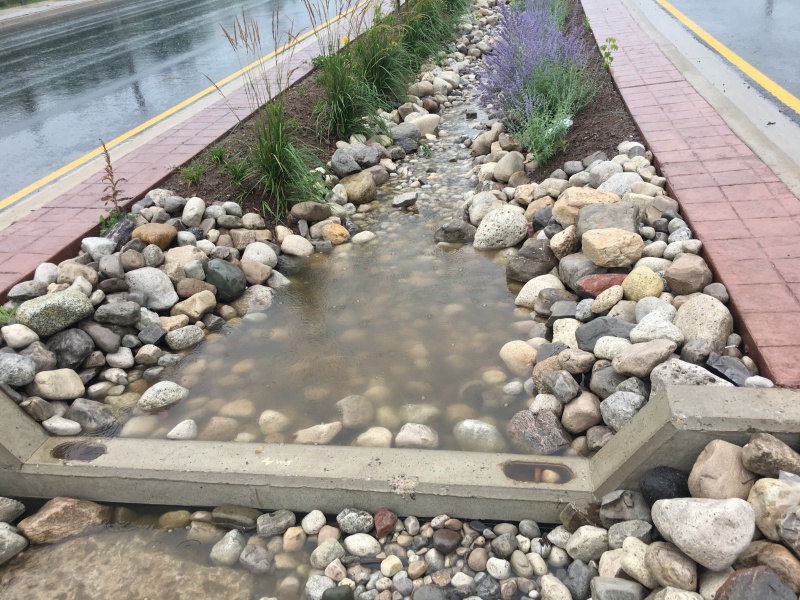Lahar Flows: Simple Explanation of Volcanic Mudflows

Believe it or not, some of the deadliest lahar flow events weren't even directly triggered by a volcanic eruption. Heavy rainfall alone, saturating already unstable volcanic deposits, can be enough to unleash a devastating volcanic mudflow. This highlights the complex interplay of factors that contribute to these dangerous phenomena. Let's delve into the world of lahar flows and understand what they are, how they form, and why they pose such a significant threat.
What is a Lahar Flow?
A lahar flow, simply put, is a type of volcanic debris flow or volcanic mudflow. It's a slurry of pyroclastic material (ash, pumice, rock fragments), debris, and water that flows down the slopes of a volcano, or other volcanic terrain, under the force of gravity. Think of it as a concrete river, capable of immense destruction due to its density and speed. Unlike lava flows, which are molten rock, lahar flows are a mixture of solid particles and water, making them incredibly mobile and destructive. The term "lahar" originates from Indonesian, where these flows are a common and devastating hazard.
The consistency of a lahar flow can vary greatly. It can range from a relatively watery slurry to a thick, pasty consistency similar to wet cement. This consistency depends on the ratio of water to solid material, as well as the type and size of particles in the mixture. The greater the concentration of solid material, the more destructive and powerful the flow tends to be.
How are Lahar Flows Formed?
Mudflow causes can be varied, stemming from diverse interactions with the volcano and surrounding environment. Understanding these causes is key to lahar risk assessment and mitigation.
Melting Ice and Snow
One of the most common triggers for lahar flows is the melting of snow and ice on a volcano's summit or flanks. This can be caused by a volcanic eruption itself, or simply by seasonal warming. The meltwater mixes with loose volcanic ash and debris, creating a slurry that then flows downhill. Volcanoes in regions with significant snow or ice cover are particularly prone to this type of lahar hazards.
Heavy Rainfall
As mentioned in the opening, heavy rainfall can also be a significant trigger for lahar flows, even without a concurrent volcanic eruption. Intense rainfall saturates the loose volcanic deposits, increasing their weight and destabilizing them. This can lead to landslides and debris flows that quickly transform into lahar flows as they pick up more material and water along their path.
Volcanic Eruptions
Volcanic eruptions are a primary cause. Pyroclastic flows, which are hot, fast-moving currents of gas and volcanic debris, can deposit vast amounts of ash and pumice on the slopes of a volcano. This material is often unstable and easily erodible. When rain falls on these deposits, or when snow and ice melt, it readily mixes with the pyroclastic material to form a lahar flow. Additionally, eruptions can directly eject water from crater lakes, triggering immediate volcanic mudflow events. The combination of newly erupted material and available water creates ideal conditions for lahar hazards.

What Makes Lahar Flows So Dangerous?
The danger posed by lahar flows stems from several factors, including their speed, density, unpredictability, and ability to travel long distances. The following points outline the key aspects of lahar hazards:
- Speed: Lahar flows can travel at speeds of up to 60 kilometers per hour (37 mph) or even faster in steep terrain. This speed makes them extremely difficult to outrun.
- Density: The high density of lahar flows allows them to carry large boulders, trees, and even buildings. This destructive force can obliterate everything in their path.
- Unpredictability: Lahar flows often follow existing river valleys, but they can also change course unexpectedly, making it difficult to predict their precise path. This unpredictability makes evacuation planning challenging.
- Distance: Lahar flows can travel for tens or even hundreds of kilometers from their source, impacting communities far from the volcano itself. This long reach makes them a widespread threat.
- Volume: A single lahar flow can carry a massive volume of material, enough to bury entire towns and villages.
Consider the following table, which summarizes the key characteristics contributing to the danger of lahar flows:
| Characteristic | Description | Impact |
|---|---|---|
| Speed | High velocity (up to 60 km/h or more) | Makes escape difficult, short warning times |
| Density | High density due to mixture of rock, ash, and water | Capable of carrying large objects and demolishing structures |
| Unpredictability | Path can change unexpectedly | Difficult to predict and prepare for impact |
| Distance | Can travel long distances from the volcano | Threatens communities far from the immediate eruption zone |
| Volume | Large volume of material in a single flow | Can bury entire settlements |
Assessing and Mitigating Lahar Risk
Lahar risk assessment is crucial for protecting communities living near volcanoes. This involves identifying areas that are vulnerable to lahar flows, estimating the probability of these events occurring, and determining the potential impacts. Monitoring volcanic activity, studying past lahar flow events, and using computer models are all important tools for lahar risk assessment.
Mitigation measures can include:
- Evacuation planning: Developing and practicing evacuation plans for communities at risk.
- Construction of barriers and channels: Building structures to divert or contain lahar flows.
- Early warning systems: Implementing systems to detect and warn of impending lahar flows.
- Land-use planning: Restricting development in high-risk areas.
- Community education: Educating the public about lahar hazards and lahar safety procedures.
Early Warning Systems
Effective early warning systems are a critical component of lahar safety. These systems typically involve monitoring various parameters, such as rainfall intensity, seismic activity, and stream flow levels. When these parameters exceed certain thresholds, alerts are issued to warn communities of an impending lahar flow. The key is to provide sufficient warning time for people to evacuate to safer areas. This requires reliable monitoring equipment, effective communication channels, and well-defined evacuation procedures.
Structural Mitigation Measures
In some cases, structural mitigation measures can be implemented to reduce the impact of lahar flows. These measures may include the construction of check dams, debris basins, and diversion channels. Check dams are small barriers built across river channels to slow down the flow of volcanic debris flow and trap sediment. Debris basins are larger structures designed to capture and contain lahar flows. Diversion channels can be used to redirect lahar flows away from populated areas. The effectiveness of these measures depends on the specific characteristics of the volcano and the surrounding terrain.

The table below summarizes some key mitigation strategies and their application:
| Mitigation Strategy | Description | Application |
|---|---|---|
| Evacuation Planning | Developing and practicing evacuation routes and procedures. | Essential for all at-risk communities. |
| Structural Barriers | Construction of dams, channels, and basins to control flow. | Suitable for specific locations based on topography and flow patterns. |
| Early Warning Systems | Monitoring and alerting communities of impending lahar flows. | Critical for providing timely warnings and enabling evacuations. |
| Land-Use Planning | Restricting development in high-risk zones. | Long-term strategy to minimize exposure to lahar hazards. |
| Community Education | Raising awareness about lahar flows and lahar safety. | Empowering residents to take appropriate actions. |
FAQ
Here are some frequently asked questions about lahar flows:
- What is the difference between a lahar flow and a pyroclastic flow?
- A pyroclastic flow is a hot, fast-moving current of gas and volcanic debris, while a lahar flow is a slurry of water, rock, and ash. Pyroclastic flows are typically associated with explosive volcanic eruptions, while lahar flows can occur even without an eruption, triggered by rainfall or melting snow and ice.
- How can I stay safe during a lahar flow?
- The best way to stay safe is to evacuate to higher ground immediately if you are in a lahar hazard zone. Follow the instructions of local authorities and emergency responders. Be aware of warning signs, such as increased stream flow or unusual noises coming from the volcano. Also, keep informed about the volcanic hazards in your area.
- Are all volcanoes prone to lahar flows?
- Volcanoes with steep slopes, abundant loose volcanic debris, and a source of water (snow, ice, or heavy rainfall) are more prone to lahar flows. However, any volcano can potentially generate lahar flows under the right conditions.
- Can lahar flows occur years after a volcanic eruption?
- Yes, lahar flows can occur years, or even decades, after a volcanic eruption, as long as there is still loose volcanic material on the slopes of the volcano and a source of water to mobilize it.